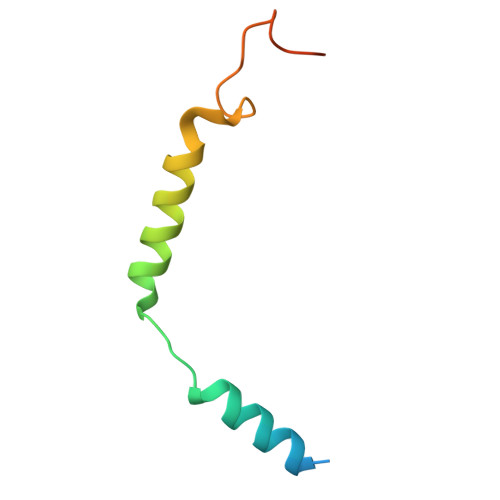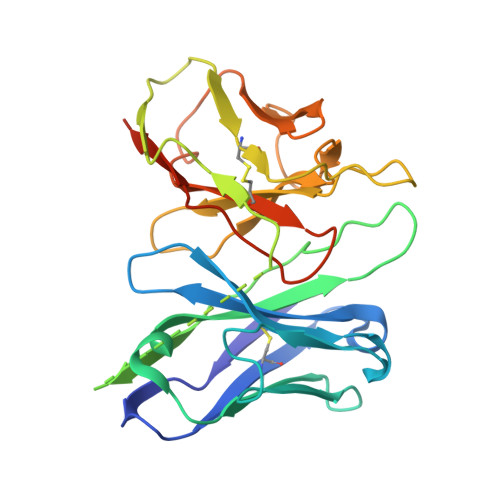Insights into G-protein coupling preference from cryo-EM structures of G q -bound PTH1R.
Sano, F.K., Shimizume, K., Kobayashi, K., Awazu, T., Kawakami, K., Akasaka, H., Kobayashi, T.A., Tanaka, T., Okamoto, H.H., Hirano, H., Kusakizako, T., Shihoya, W., Kise, Y., Itoh, Y., Ishitani, R., Okada, Y., Sako, Y., Yanagawa, M., Inoue, A., Nureki, O.(2025) Nat Chem Biol
- PubMed: 40571720
- DOI: https://doi.org/10.1038/s41589-025-01957-6
- Primary Citation of Related Structures:
9JR2, 9JR3 - PubMed Abstract:
The parathyroid hormone type 1 receptor (PTH1R) is a prototypical class B1 G-protein-coupled receptor that couples to both G q and G s , having a crucial role in calcium homeostasis and serving as a therapeutic target for osteoporosis. Therapies targeting PTH1R face challenges because of G q -associated prolonged signaling, which leads to bone resorption. To address this, selective activation of G s signaling is desirable. However, the structural basis of G q -mediated signaling remains unclear, limiting the development of signal-selective drugs. Here, we present cryo-electron microscopy structures of the PTH1R-G q complex in two distinct extracellular conformations, demonstrating the role of N-linked glycans at N176 1.28 in stabilizing the ligand-tilted conformation. Comparison with a G s -bound PTH1R structure highlights the role of key interactions involving both the C terminus of Gα and the receptor's intracellular loop 2 in G q signaling. These structural insights provide a foundation for understanding the molecular mechanisms of PTH1R signaling.
- Department of Biological Sciences, Graduate School of Science, The University of Tokyo, Tokyo, Japan.
Organizational Affiliation:





















